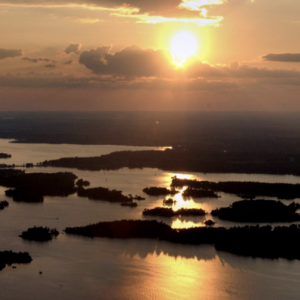Canada’s Climate Plan Fails to Address Hidden Logging Emissions
FOR IMMEDIATE RELEASE
Tuesday, March 29, 2022
There is a forestry sector-sized hole in Canada’s 2030 Emissions Reduction Plan. The plan, released today, outlines how Canada will cut greenhouse gas (GHG) emissions by 40 to 45 percent by 2030. Although the plan mentions nature-based climate solutions, it fails to include specific actions to better protect Canada’s climate-critical primary forests, nor does it commit the government to properly account for and reduce emissions from industrial logging.
“This plan rightly recognizes the key role forests and other ecosystems play in preserving a safe and livable world,” said Graham Saul, Executive Director for Nature Canada. “However, without acknowledging and addressing the significant carbon dioxide emissions of industrial logging, the government, quite simply, won’t succeed in meeting its 2030 climate targets.”
Industrial logging in Canada is responsible for a net release of more than 80 million tonnes of carbon dioxide a year – that’s the equivalent to the emissions from all of Canada’s oil sands operations. But today’s Plan continues to claim net emissions from forest land are close to zero.
While the Plan reiterates Canada’s commitment to “continuously improve” its accounting of forest sector emissions, there is no recognition of what needs improvement – no acknowledgement that emission numbers are wrong, and no clear actions or timeline to address the failure to fully report logging sector GHG emissions.
The plan should be applauded for its recognition of the importance of protecting, restoring and better managing natural ecosystems, and its investment of an additional $780 million for the Nature Smart Climate Solutions Fund to deliver emission reductions.
As a boreal nation, Canada is home to 25 percent of the world’s remaining intact forest, the most carbon-dense terrestrial ecosystem in the world. Yet each year, Canada logs over 400,000 hectares of boreal forest, much of this in carbon-rich primary forests.
“Canada’s status as a global climate leader will depend on its plan to rapidly transition from fossil fuels and protect its globally-significant forests,” said Anthony Swift, Director of NRDC’s Canada Program. “But until it addresses the vast amount of carbon lost each year from clearcutting in its primary forests, Canada’s plan is not yet ready for prime time.”
An EKOS poll, released yesterday, showed that 83 percent of Canadians want stronger protection of forests and wildlife, and 73 percent wanted Canada’s 2030 Emissions Reduction Plan to include strong action to reduce greenhouse gas emissions from logging. Just last week, nearly 100 scientists from around the world called on the Canadian government to better protect its primary forests.
For more information contact:
Michael Polanyi, Nature Canada
343.553.6060
mpolanyi@naturecanada.ca
Margie Kelly, NRDC
312.651.7935
MKELLY@NRDC.ORG



